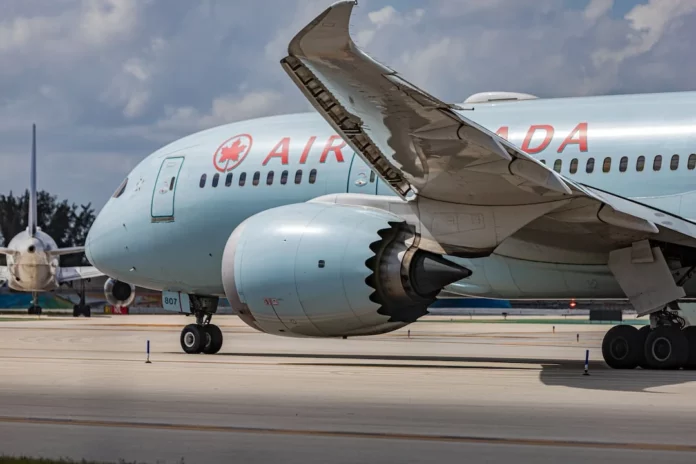Aviation is a complex industry with its own unique set of terminologies. One such term is “Transfer,” often referred to by its abbreviation XFR. In the context of aviation, transfer refers to the movement of passengers, cargo, or aircraft from one location to another. This can involve transferring passengers from one flight to another, transferring cargo between different airports, or even transferring an aircraft from one airline to another. In this article, we will delve deeper into the concept of transfer in aviation, exploring its various aspects and significance within the industry.
Contents
Anatomy of a Transfer: Understanding the Process
The transfer process involves several steps and considerations. Let’s take a closer look:
An Important Connection: Transfer Passengers
Transfer passengers play a crucial role in the aviation industry. When a passenger’s journey involves multiple flights, transfers become necessary to reach their final destination. These passengers are known as transfer passengers, or transit passengers, and go through a unique process during their journey.
Upon arriving at the transit airport, transfer passengers go through a series of procedures. They are required to deplane, collect their baggage if applicable, and proceed to the transfer desk or gate for their onward flight. Depending on the airport and airline policies, transfer passengers may have to go through security screening again before boarding their next flight.
An efficient transfer process is essential to minimize delays and ensure a smooth experience for transfer passengers. Airlines and airports invest in modern facilities and advanced technologies to streamline transfer operations. For example, some airports have dedicated transfer terminals with dedicated staff to assist transfer passengers, while others utilize automated systems for baggage handling and check-in.
Cargo Transfer: Moving Goods Across the Skies
Transfer in aviation also encompasses the movement of cargo between different airports. Cargo transfer involves the transportation of goods from one location to another, often with intermediate stops for loading and unloading.
When it comes to cargo transfer, speed and efficiency are crucial. Airlines and cargo operators have dedicated cargo terminals equipped with state-of-the-art facilities to ensure the smooth transfer of goods. These terminals are equipped with specialized equipment, such as cargo loaders and forklifts, to handle different types of cargo efficiently.
In addition to physical infrastructure, cargo transfer also relies heavily on logistical support. This involves meticulous planning, coordination, and documentation to ensure that goods are transferred seamlessly. Various security measures are also implemented during cargo transfer to maintain the integrity of the goods being transported.
Carrier Transfer: When Aircraft Switch Hands
In certain cases, airlines may opt to transfer aircraft from one carrier to another. This can occur due to various reasons, such as lease agreements, fleet optimization, or merger and acquisition activities within the industry.
When an aircraft is transferred from one carrier to another, several processes must take place. These include updating the aircraft registration, performing any necessary maintenance or refurbishments, and ensuring compliance with regulatory requirements.
Transfer of aircraft also involves a comprehensive documentation process, including the transfer of logbooks, maintenance records, and other relevant paperwork. Additionally, pilots and crew members may undergo familiarization training to ensure a smooth transition to the new aircraft.
The Significance of Transfer in Aviation
The concept of transfer is integral to the functioning of the aviation industry. It enables passengers to reach their final destinations, facilitates the movement of goods across the globe, and allows airlines to optimize their fleet and operations.
Efficient transfer processes are essential for airlines and airports to maintain high levels of customer satisfaction. Delayed or mishandled transfers can result in missed connections, disrupted travel plans, and disgruntled passengers. This highlights the importance of investing in infrastructure, technology, and staff training to streamline the transfer process.
From a cargo perspective, transfer plays a crucial role in global trade and logistics. Goods from different parts of the world need to be transported swiftly and securely, often requiring multiple transfers along the way. By optimizing cargo transfer processes, airlines and cargo operators can contribute to the smooth flow of goods, supporting various industries and economies.
Furthermore, carrier transfers allow airlines to adapt and optimize their operations. By acquiring or leasing aircraft from other carriers, airlines can quickly expand their fleets or replace aging aircraft. This flexibility helps airlines cater to changing market demands, improve efficiency, and enhance their overall competitiveness.
Conclusion
Transfer, denoted by the abbreviation XFR, is a fundamental concept in aviation. It encompasses the movement of passengers, cargo, and aircraft between different locations. Whether it’s transferring passengers to their final destinations, transporting goods across the skies, or switching aircraft between carriers, efficient transfer processes are essential for the smooth operation of the aviation industry.
As the industry continues to evolve, the focus on improving transfer operations remains crucial. From investing in advanced technologies to enhancing infrastructure and optimizing logistical processes, airlines and airports are constantly striving to make transfers seamless and hassle-free. By doing so, they not only enhance customer satisfaction but also contribute to the efficiency and growth of the aviation sector as a whole.




